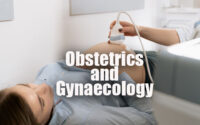Physical Medicine and Rehabilitation Questions and Answers
Physical Medicine and Rehabilitation Questions and Answers paper for the written examination is given below. Candidates who are looking for Physical Medicine and Rehabilitation exam Questions and Answers paper can find in this section. The applied candidates who are getting prepared for the Physical Medicine and Rehabilitation can view this page for the Physical Medicine and Rehabilitation Last Ten Years Questions and Answers Papers.

Download the Physical Medicine and Rehabilitation Questions and Answers & Solutions & make it as a reference for your exam preparation. Take advantage of these Physical Medicine and Rehabilitation Questions and Answers Papers in a proper manner to get qualifying Marks. Last 5 years Physical Medicine and Rehabilitation Questions and Answers Papers provided here. Candidates who are applied for the above exam can check and download the Physical Medicine and Rehabilitation Questions and Answers Papers from here.
Questions and Answers on Physical Medicine and Rehabilitation
1. Which type of nerve fibres has lowest conduction velocity?
(1) Aα fibres
(2) Aβ fibres
(3) Aδ fibres
(4) C fibres
2. To differentiate lesion of common peroneal nerve from deep peroneal nerve at fibular head which muscle should be tested with needle EMG?
(1) Long head of biceps femoris
(2) Short head of biceps femoris
(3) Peroneus longus
(4) Tibialis anterior
3. All conditions aids to knee extension in the stance phase, except?
(1) Cushioned heel
(2) Posterior offset knee joint
(3) Anterior trim line on AFO
(4) AFO fixed in plantor flexion
4. What is a correct statement about complex repetitive discharges?
(1) Commonly seen in myopathies
(2) Frequency is 10-100 Hz
(3) Amplitude is 50-1000 micro-volte
(4) All of the above
5. Which is not true regarding FIM (Functional Independence Measure)?
(1) It consist of 18 items
(2) It is describe to measure functional ability in daily activities and was designated for disabled population in general
(3) It has sub-score value from 1 to 7 to describe the burden of case
(4) It has 14 motor and 4 cognitive areas
6. In Galveston Orientation and Amnesia Test (GOAT) how much score on two consecutive testing sessions indicate that the patient is out of PTA (Post Traumatic Amnesia)?
(1) 250
(2) > 66
(3) >7I
(4) > 76
7. H reflex late response is best described as
(1) Having a stable latency from one stimulus to next
(2) Polysynaptic reflex
(3) Obtained by supramaximal stimulation
(4) Arising from a collateral axon sprout
8. Decreasing temperature affects the nerve action potential by
(1) Decreasing action potential duration
(2) Increasing time to reach peak depolarisation
(3) Increasing nerve conduction velocity
(4) Decreasing action potential amplitude
9. Out of the following which one is not a component of community based rehabilitation (CBR) matrix?
(1) Health
(2) Education
(3) Livelihood
(4) Spirituality
10. Which of the following is not one of the six determinants of gait?
(1) Pelvic tilt
(2) Knee extension
(3) Lateral displacement of pelvis
(4) Pelvic rotation
11. The distance between initial contact of right foot to the following initial contact in right foot is described as?
(1) step length
(2) cadence
(3) stride length
(4) stride period
12. The physical therapist of your team reports you a patient on discharge that can ascend and descend stairs with an assistive device and this activity takes more than reasonable time, the discharge Functional Independence Measure (FIM) score for this locomotion item would be?
(1) 4
(2) 5
(3) 6
(4) 7
13. At what speed (m/s) normal gait on level surfaces is most efficient?
(1) 1 m/s
(2) 3 m/s
(3) 4m/s
(4) 5 m/s
14. Choose the correct statement.
(1) Training induced gain in muscle strength and mass are greater with maximal effort eccentric training than maximum effort concentric training.
(2) Training induced gain in muscle strength and mass are greater with maximal effort concentric training than maximum effort eccentric training.
(3) Greater load can be controlled with concentric exercise than eccentric exercise.
(4) Concentric muscle contraction are more efficient metabolically and generate less fatigue than eccentric contraction.
15. The therapeutic frequency range of ultrasound is
(1) 1 Khzto3 Khz
(2) 1 Mhz to 3 Mhz
(3) 10 Khz to 20 Khz
(4) 10 Mhz to 15 Mhz
16. Which is not a contraindication to short wave diathermy?
(1) Haemorrhage
(2) Venus thrombosis or Phlebitis
(3) Loss of skin sensation
(4) Inflammatory conditions
17. When a biological active substance used as coupling medium for ultrasound therapy to force the active material into tissue is known as
(1) Fluidotherapy
(2) Phonophoresis
(3) Intophoresis
(4) SWD
18. Which form of ultrasound is FDA 2 approved for use in treating the wounds?
(1) Low frequency, non-contact ultrasound
(2) High frequency, contact ultrasound
(3) Low frequency, contact ultrasound
(4) High frequency, non-contact ultrasound
19. Which of the following is not a physiological effect of cold?
(1) Decrease conduction velocity
(2) Increase spasticity
(3) Vasoconstriction
(4) Decrease acute inflammation
20. An example of closed kinetic chain exercise for the quadriceps is
(1) Partial squat
(2) An isometric quadriceps set
(3) Knee extension sitting on chair
(4) Straight leg raise
| Practice Set | MCQs |
| Quiz | Questions and Answers |
21. In contrast bath time of immersion in hot and cold bath is
(1) hot 30 seconds cold 10 seconds
(2) hot 10 seconds cold 30 seconds
(3) hot 3 minutes cold | minute
(4) hot 1 minute cold 3 minutes
22. In cervical traction, the optimum angle of pull ranges between
(1) 5-10 degree of flexion
(2) 10-15 degree of flexion
(3) 20-30 degree of flexion
(4) 40-45 degree of flexion
23. Which best describes type IIb muscle fibres?
(1) Fast twitch, anaerobic
(2) Slow twitch, aerobic
(3) Fast twitch, glycolytic
(4) High mitochondrial density
24. Which type of seat cushion has fair resilience?
(1) Hybrid cushion
(2) Foam cushion
(3) High viscosity gel cushion
(4) Low viscosity gel cushion
25. Which crutch gait is fastest mode of ambulation?
(1) Two point gait
(2) Three point gait
(3) Swing to gait
(4) Swing through gait
26. While instructing a person who had a left CVA to use quad cane which of following is appropriate sequence?
(1) Cane in left upper limb, advance cane and right lower limb together
(2) Cane in left upper limb, advance cane and left lower limb together
(3) Cane in right upper limb, advance cane and right lower limb together
(4) Cane in right upper limb, advance cane and left lower limb together
27. While taking measurement for wheelchair which is true?
(1) Seat width about 1 inch wider than width of widest part of buttocks
(2) Seat depth as to keep 1 to 2 inch gap between popliteal area and front of the cushion
(3) Armrest height is determined by measuring the distance between forearm and buttocks
(4) All of above
28. In wheelchair following are advantages of camber except
(1) Enable access of arm to push rim
(2) Increases lateral stability
(3) Reduces shoulder abduction
(4) Increased traction and durability of tires
29. Which is not true regarding terminal devices in upper limb prosthesis?
(1) Voluntary opening most commonly used
(2) Hooks have lateral pinch grip
(3) Voluntary closing devices remains closed in rest
(4) Voluntary closing devices provide better closing pressure
30. How much pronation and supination presented in trans-radial amputation can be transmitted to the prosthesis?
(1) 50%
(2) 70%
(3) 80%
(4) 90%
31. What is ideal time for prosthesis fitting In upper limb after surgery?
(1) 7 days after surgery
(2) Within 4-8 weeks
(3) After 3 months
(4) After 6 months
32. Which is not true regarding bionic hand?
(1) Separate motor and sensor in every fingers
(2) Electronic thumb can be rotate to 90 degree
(3) The digits separately and independently
(4) First digit can create multiple grip patterns
33. Single axis foot regarding uses and advantage which is not true?
(1) Useful in trans-tibial amputation and week quadriceps
(2) Trans femoral amputation with inadequate control of prostatic knee joint
(3) Aids an individual in walking down a incline
(4) None of the above
34. Which is not true regarding PFFD (Proximal Femoral Focal Deficiency)?
(1) Second most common congenital deficiency of lower limb
(2) Aitken’s method is most commonly used and accepted classification system
(3) Foot to foot prosthesis is used
(4) None of the above
35. Swanneck splint is an example of :
(1) Dynamic splint
(2) Serial static splint
(3) Static motion block splint
(4) Static progressive splint
36. Which type of shoe would you recommend to a- runner with hyperpronation of foot?
(1) Firm medical heel counter with wide shank
(2) Soft medical heel counter with wide shank
(3) Firm medical heel counter with narrow shank
(4) Soft medical heel counter with narrow shank
37. A custom made PTB AFO can reduce weight bearing in the affected foot by up to
(1) 100%
(2) 75%
(3) 50%
(4) 25%
38. Which is false regarding posterior offset knee joint?
(1) It is useful in patients with weak knee extensor and some hip extensor strength
(2) Allows free flexion and extension during swing phase
(3) Keeps orthotic ground reaction force in front of knee axis during stance
(4) None
39. Which type of knee lock provides the easiest method of simultaneously unlocking the medical and lateral knee joints of KAFO?
(1) Drop lock
(2) Bail lock or swiss lock
(3) Ratchet lock
(4) All of the above
40. Which of the cervical orthotics or immobilizer is most effective in blocking the flexion extension movement of cervical spine?
(1) Minnerva body jacket
(2) Halo devise
(3) SOMI brace
(4) Four poster brace
41. A patient who will be using prosthesis for some activities more than simple walking with variable cadence and is also a community ambulatory who can traverse most of the environmental barriers, is at which K level?
(1) K1
(2) K2
(3) K3
(4) K4
42. Pressure sensitive area of transtibial residual limb include all except
(1) Shaft of fibula
(2) Distal fibula
(3) Fibular head
(4) Hamstring
43. Which is not true regarding anterior floor reaction AFO?
(1) Provide knee extension at mid stance
(2) Fabricated to hold ankle slight dorsiflexion
(3) Contraindicated In genu recurvatum
(4) Used in Crouch gait in cerebral palsy
44. Most common muscle involved in myositis ossificans following contusion in thigh
(1) Hamstring
(2) Popliteal
(3) Quadriceps
(4) Both (1) and (3)
45. The presence of a small capsular avulsion tracture of the lateral tibial plateau (second fracture) is pathognomic of the presence of tear of
(1) ACL (Anterior cruciate ligament)
(2) PCL (Posterior cruciate ligament)
(3) MCL (Medial collateral ligament)
(4) LCL (Lateral collateral ligament)



